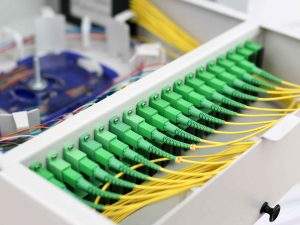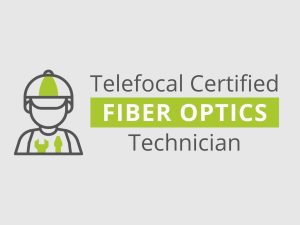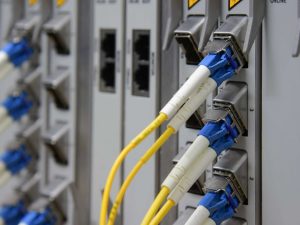FTTX Planning, Design and Implementation (ODN)

Course Overview
This course explains the different FTTx architectures, highlighting the advantages and disadvantages of the various solutions. It includes the key planning, design and construction rules of Optical Distribution Networks (ODN), as well as the challenges of network operations and maintenance.
A number of case studies will be considered and participants will get to be involved in hands-on practical lab work on designing networks in different scenarios using optical time-domain reflectometer (OTDR), optical power meters, optical source (OLTS) and fusion splicing. They will also be taught the preparation of business cases for cost-benefit analysis.
Target Audience
Designers, planners, senior engineers, project managers, field engineers, quality control engineers, and for junior staff considered for elevation
Duration & Training Format
- Classroom: 3 days
- LIVE Virtual: 21 hours
- A minimum of 8 or more participants is required for a Classroom session to commence.
- A minimum of 6 or more participants is required for a LIVE Virtual session to commence.
- LIVE Virtual courses can be conducted for 5 hours or 7 hours daily. Please note that the number of training days will be extended if you opt for 5 hours daily.
Upcoming Course Dates
Course Outline
- FTTX: An Overview
- Evolution of G- PON Technology and Standards
- Access Migration: FTTC, FTTB, FTTH/P
- Ethernet PON, BPON
- Wireless, Broadband, Copper
- Ethernet , Point to Point
- GPON Architecture and Working Principles
- WDM/DWDM PON
- Single Core and Double Core Access Network
2. Optical Layer
- Introduction of Optical Layer
- Optical Fiber in Transport
- Optical Fiber in Access
- Connectors and Splices
- WDM Devices and Optical Filters
- Passive Optical Splitters
- Power Budget
- Coexistence
- Optical Transmitters
- Optical Receivers
- G-PON Transceiver Modules
- Optical Amplifiers
- Reach Extension
3. ODN Components
- OFC Underground, Aerial/Overhead, Indoor, Outdoor
- ODF Types
- Centralized Splitters
- Cascaded Splitters
- Merits and Demerits of Centralized and Cascaded Splitter
- Feeder Cable
- Distribution Cable
- Drop Cable
- Aerial Cables
- In-house Cables and In-house Cabling
- In-house Cabling Reference Model
- Building Entry Point (BEP)
- Floor Distributor (FD)
- Joint Box : Types and Locations
- Outdoor Cabinets
- Connectors and Rosettes
- Distribution Closure
- Drop Closure
- ONT and Different Types
- ONT Box with Accessories
- ODF
- Racks and Internal Cabling
- Micro Ducts and Micro Cables
- Labelling and Tagging Best Practices for ODN Components
4. Planning, Designing and Dimensioning of ODN
- Getting Started
- Project Planning
- Detailed Planning
- Cost Benefit Analysis, Payback Period and ROI at Project Level
- Network Architecture – Pt to Pt, Pt to MP
- Centralized Splitters
- Cascaded Splitters
- Merits and Demerits of Centralized and Cascaded Splitter
- Feeder Cable
- Distribution Cable
- Drop Cable
- Copper, Fiber or Wireless
- Choosing OLT/Transmission Equipment
- Planning the Route(s)
- Choosing Components for Outside Plant Installations
- Choosing Components for Premises Installations
- The Link Power Budget
- Protection/Diversity
- Documentation/ Database
- Planning for the Install
- Developing a Test Plan
- Planning For Service Restoration
- Choosing a Contractor
- Managing the Project
- Maintaining the Network- Proactive Approach and Trouble Shooting
- Network Planning for Green Field, Brown Field, Backhauling
- Cabling Standards
5. Service Provision and OAM
- Cable Termination at Premises
- CPE Installation
- Service Provisioning and Service Validation
- Service Testing
- Trouble shooting
6. Audio Visuals for:
- Cable Laying
- Cable Jointing
- Joint Boxes
- Mechanical Splicing
- ODF Installation etc.
7. Practical work
- Design of Network in Different Scenarios
- Preparing Business Case for Cost Benefit Analysis
8. Lab Work
- OTDR, OPM, Optical Source (OLTC)
- Fusion Splicing
Note: A Certificate of Completion will only be issued upon achieving at least 75% attendance for the course.
Pre-requisites
NIL



